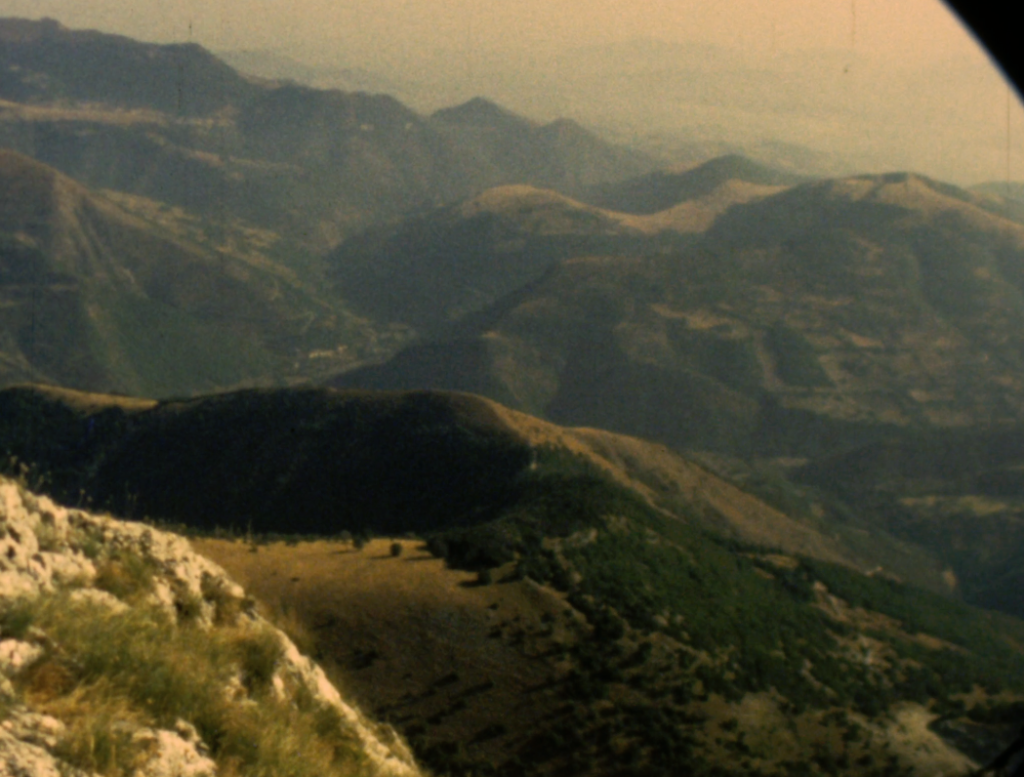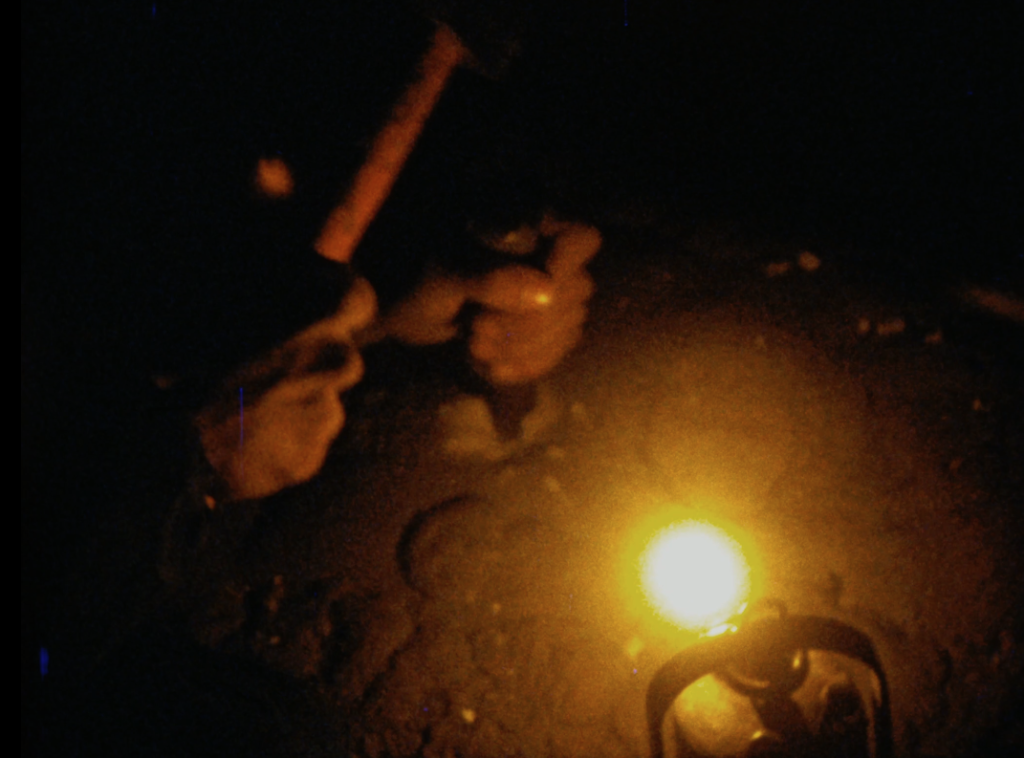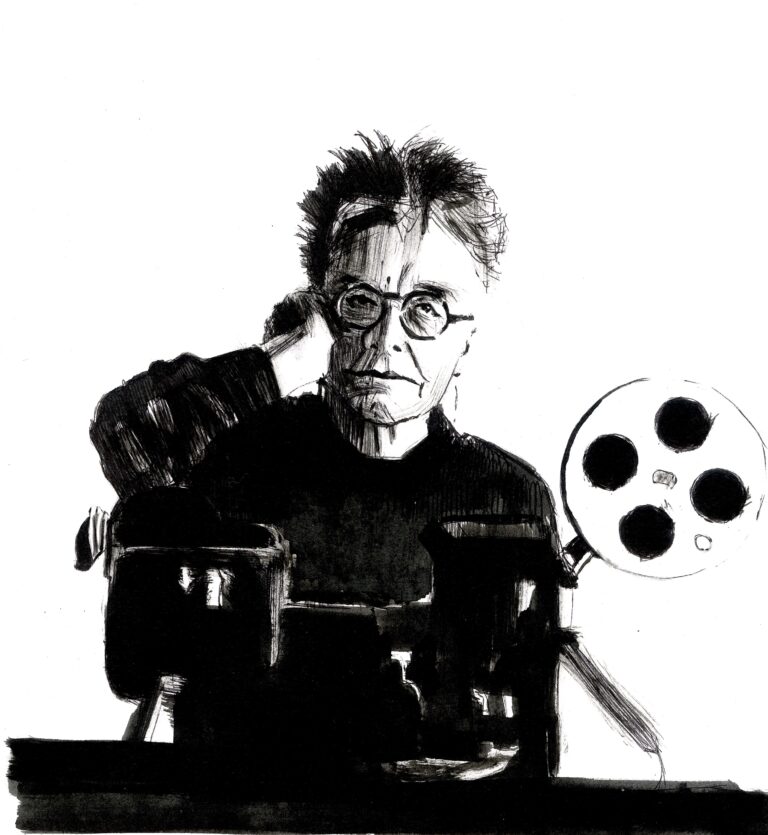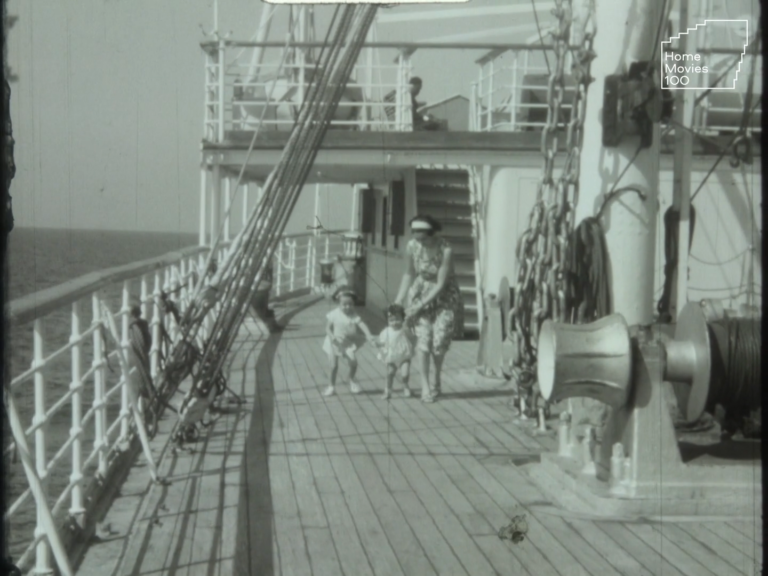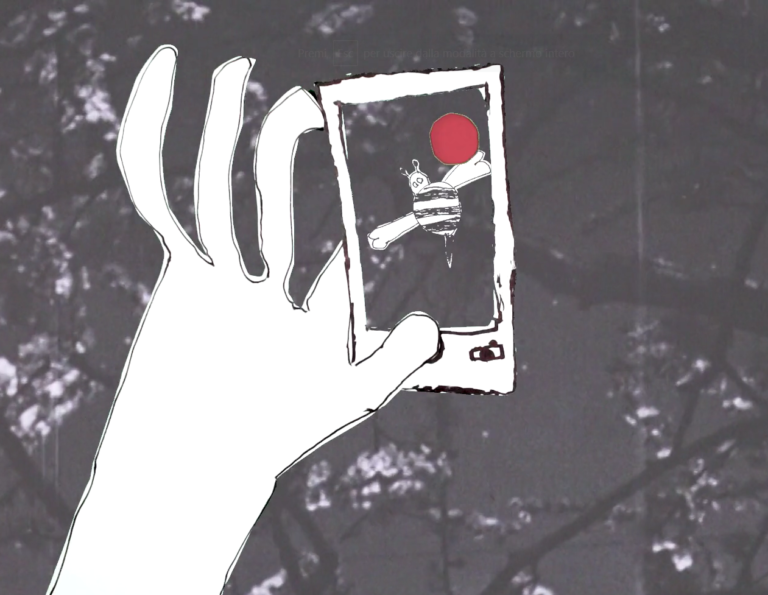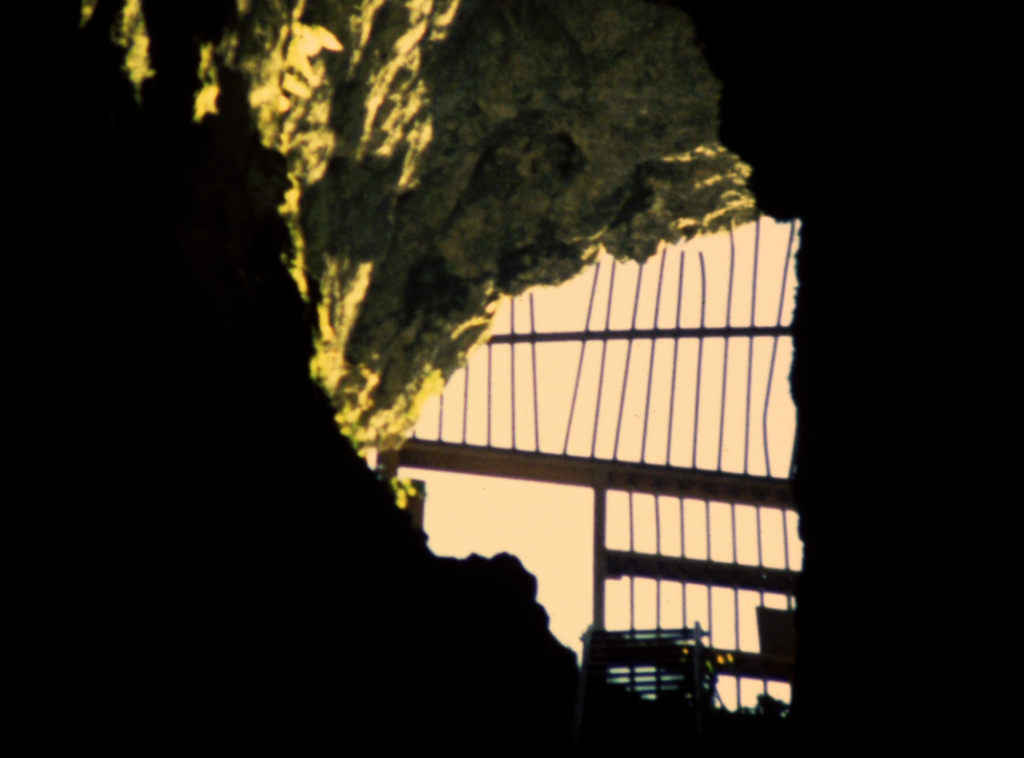
In 1982, the city of Gubbio was shaken by a strong earthquake that fortunately left unharmed the symbolic structure created by Mirella Bentivoglio in 1976, named ‘L’Ovo’ by the people of Gubbio. As a sign of gratitude to the earth, the artist decided to place an egg made of cement in the cave of Monte Cucco, epicentre of the earthquake.
The gesture made by the artist reveals itself as a protective gift, represented by the shape of the egg “chosen by nature to protect every seed of life”.
The placing of the ex voto in the cave was documented with a colour film in Super8 format. Technical restoration and digitisation allowed the faint traces of carbide lamps used by the cavers to emerge. The low sensitivity of the photographic emulsion used by the small format camera and the traces impressed on the film were a real challenge for the restoration. In the darkness of the cavern, details are lost in the distance and, conversely, erased by excess light in close-up shots. The contrast between the sunny green and reassuring Umbrian landscape of the exterior and the deep blackness of the cave crossed only by the beams of yellow light that try to bring the positioning of the Egg into focus, continues until the blinding grid that cannot hold back the dazzling light of the exit.
Information
Country
ItalyYear
1985Length
10'
Category
Artistic filmDirector’s biography
Mirella Bentivoglio: poet, artist, critic, curator, protagonist in the world of Italian and international verbovisual research; she was born in Klagenfurt in 1922 of Italian parents and received a multilingual education in German-speaking Switzerland and England. The author, from her early youth, of books of poems in Italian and English, she later found expression in her attraction for the combined use of verbal language and image, linking herself to the verbovisual movements of the international artistic neo-avant-gardes of the second half of the 20th century, becoming a leading figure.
